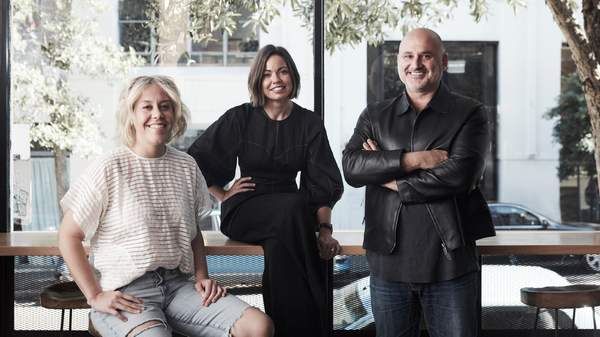Overview
Restaurants and bars all over the country are increasingly embracing sustainability. But this isn't just some fad that will come and go after a few short years — it's not cake pops or the cronut. Their work is part of a greater shift towards creating a more sustainable food system.
Consumers have a lot to learn from chefs and business owners in the industry. They have dedicated themselves to cooking delicious food in a sustainable way. Simply put, they know best.
We spoke to some of the leaders of the sustainability movement in New South Wales' hospo scene to hear about the changes they've made in their kitchens and to get some advice on what we can do at home. We heard from Ben Devlin and Yen Trinh, owners of Northern Rivers fine diner Pipit; Danielle Alvarez, former head chef of Fred's; and Rebecca and Al Yazbek, owners of NOMAD.
Keep reading to discover what these legends are up to behind the pass and get tips on how you can introduce similar measures at home.
Sabine Bannard
COOKING WITH MORE VEGETABLES AND BETTER MEAT
Chef Ben Devlin and partner Yen Trinh, owners of Pipit, create menus that truly celebrate vegetables. Devlin notes "the impact that vegetable production has on the environment in our area is often a little lower than meat production, so it makes sense to get more of your nutrition from vegetables and a smaller amount from meat.
"There is a huge range of possibilities in vegetable cooking that can provide a wider variety of flavours and textures, and it is a really great way of connecting to the land, the weather and the seasons."
That doesn't mean you need to go full vegetarian or vegan — moderation is key for Devlin and Trinh. "I think meat is something that you should try to buy as high quality as possible in smaller amounts," Devlin says. It has less of an impact on the environment and it tastes a whole lot better, too.
Pipit Restaurant and Sabine Bannard
USE LESS PLASTIC AND RECYCLE MORE
The Pipit team also cares deeply about reducing the amount of plastic it brings into the restaurant, and how it recycles what it does use.
Devlin and Trinh shared the ways they achieve this. "We don't have cling film or single-use cloths. We invest in more sturdy plastic containers that can be washed and re-used more. We use biodegradable or reusable piping bags. We ask all suppliers to ship in reusable and returnable containers and we use the Return and Earn program for our beer cans and bottles," Devlin says.
People at home can make similar changes when it comes to reducing how much plastic they bring into the home, and how they recycle the plastic that makes it through the door. One really helpful initiative is the NSW Government's aforementioned Return and Earn scheme. It allows people to earn ten cents per eligible container they recycle at one of the return points located throughout the state. You can either keep the money yourself or donate it directly to a charity.
Helping protect the environment while supporting local charitable causes — that's a massive win-win. Just be sure the containers are empty, in good condition, and have the label attached. That makes it easier for the containers to have a great second life, and not find their way into landfills.
CELEBRATING LOCALLY SOURCED, SEASONAL PRODUCE
For Danielle Alvarez (pictured above), the former head chef of Fred's, buying ingredients from good local sources is the best thing we can do — not only because it's great for the environment, but also because it makes for tastier food.
Alvarez says, "I've always believed the biggest impact chefs can have in restaurants is making better choices with what we purchase and put on our menus. Industrial farming and transportation are some of the biggest carbon emitters out there so if you buy from small local organic farms you can be sure your net carbon impact will be much lower.
"Moreover, these kinds of farmers farm regeneratively so the land and the surrounding areas will still be healthy for the next generation."
Petrina Tinslay
WASTE REDUCTION
When designing menus, all the chefs and restaurateurs have creatively thought up ways to use every part of each animal and plant they buy. The terms 'nose to tail' and 'root to fruit' are commonly used for this kind of sustainable cooking, when chefs use everything to reduce waste and come up with new and exciting things to eat.
"Food waste is something we're really proud of. It is so minimal. We buy in whole animals and break them down, use what we can in our charcuterie," Rebecca and Al Yazbek, owners of NOMAD, say.
"We also have a green waste program so that no food scraps go to landfill. We work with our suppliers on reducing oversupply and ensuring minimal waste by coordinating with our reservations team to know what is coming up in a week and to order accordingly."
The duo also has some advice for us about reducing waste. "Before going to the grocery store, use what is in your cupboard. Food waste is expensive and, in a lot of instances, unnecessary. Shop your fridge and pantry and get more confident in the kitchen by substituting what you have on hand instead of heading to the shops."
Ready to put your recyclables to work? Look no further than Return and Earn. Crunch your numbers at the impact calculator and see the real-world benefits your recycling will have.
Top image: Jacqui Challinor, Rebecca Yazbek and Al Yazbek by Petrina Tinslay
